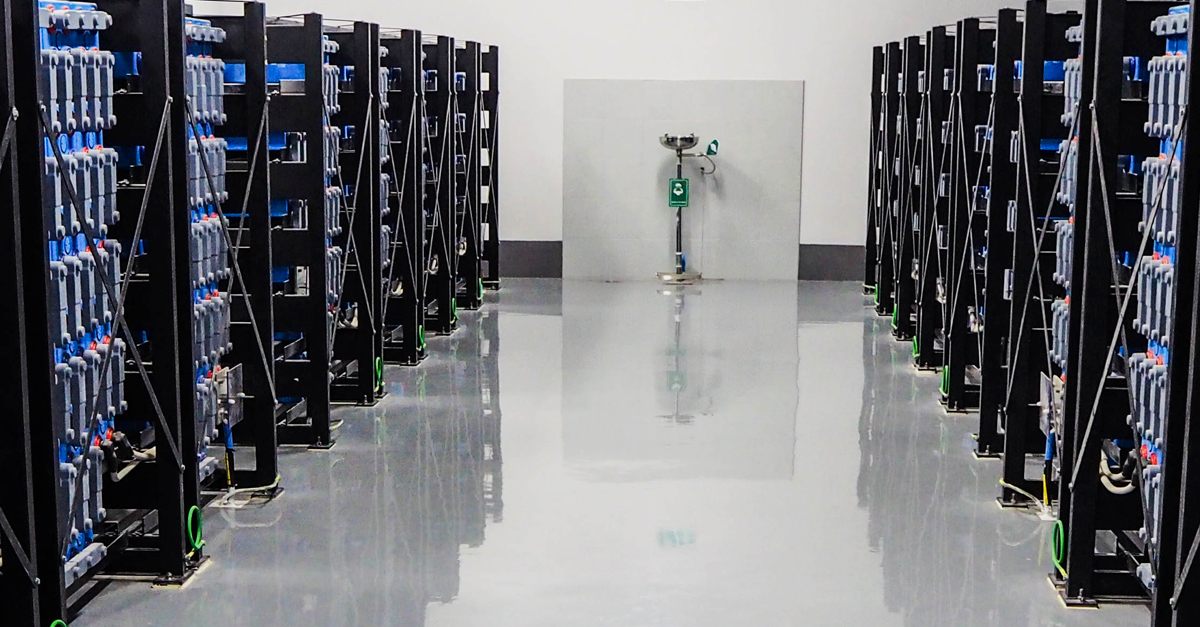Posted on: 02/01/2020
After Ofgem’s recent approval of changes to ensure that distribution connected storage assets will not have to pay the residual element of Distribution Use of System (DUoS) demand charges from April 2021 onwards, Head of Regulatory Affairs, Colin Prestwich takes a look at what is being done to level the playing field and make the ability to deploy battery storage more viable.
It’s becoming a bit of a cliché by now that grid-scale battery storage will be key to decarbonising the electricity system. Capable of smoothing out the intermittent nature of renewable generation, battery storage will be key in enabling the deployment of low-carbon generation, whilst peaking gas plants are likely to remain as a back-up technology for use when required.
But beyond the obvious barrier of cost, widespread deployment of battery storage technology has been held back by the regulatory frameworks governing charging, and specifically how storage is treated in relation to that.
As an asset which is not like traditional generation or demand, battery storage doesn’t fit into either the old charging model, or even the new one taking shape under Ofgem’s Targeted Charging Review (TCR) and their Access and Forward-Looking Charges Significant Code Review. Changes to the charging arrangements have had to take place outside of these processes.
After several years, plans to specifically define storage as generation in primary legislation (in order to provide regulatory certainty for developers) are still ongoing. The latest update was issued by Will Broad, Government’s Head of Smart Energy, in May 2018. He claimed that Brexit had taken up so much Parliamentary time, that the biggest commitment BEIS could make was to say that the legislation would be passed by the end of the current Parliament, meaning this could take up to 2022.
However, Ofgem’s move to formally offer storage a generation licence has at least provided a clear direction of travel, whilst also addressing the issue of ‘double-charging’ Final Consumption Levies, including Contracts for Difference (CfD) and Capacity Market (CM) charges. In essence, it has never been acceptable for storage assets to pay these charges as they are not the final consumer of the power.
On 18th December Ofgem approved Distribution Connection and Use of System Agreement (DCUSA) modifications DCP341 and DCP342 that will remove the residual element of DUoS demand charges for distribution connected storage facilities (but only where they are stand-alone and Current Transformer metered). The proposals originated from Ofgem’s TCR consultation in 2017, which indicated that storage facilities should not pay DUoS to prevent discrimination against storage facilities compared with other generation types. The modifications will also introduce new definitions for storage facilities into the charging methodologies and will be implemented on 1st April 2021.
Meanwhile, industry is still waiting for Ofgem to approve Connection and Use of System Code (CUSC) modifications CMP280 and CMP281 which would remove residual Transmission Network Use of System (TNUoS) and Balancing Services Use of System (BSUoS) charges from licensed generation and storage with a generation licence.
Taken as a whole, these changes are altering the regulatory landscape to make the deployment of storage a more viable proposition this decade. By ensuring that charges paid by storage assets are fair and transparent, project developers will be afforded greater levels of certainty, enabling them to drive the transition to a flexible, low-carbon energy system.

 United States
United States Australia
Australia






